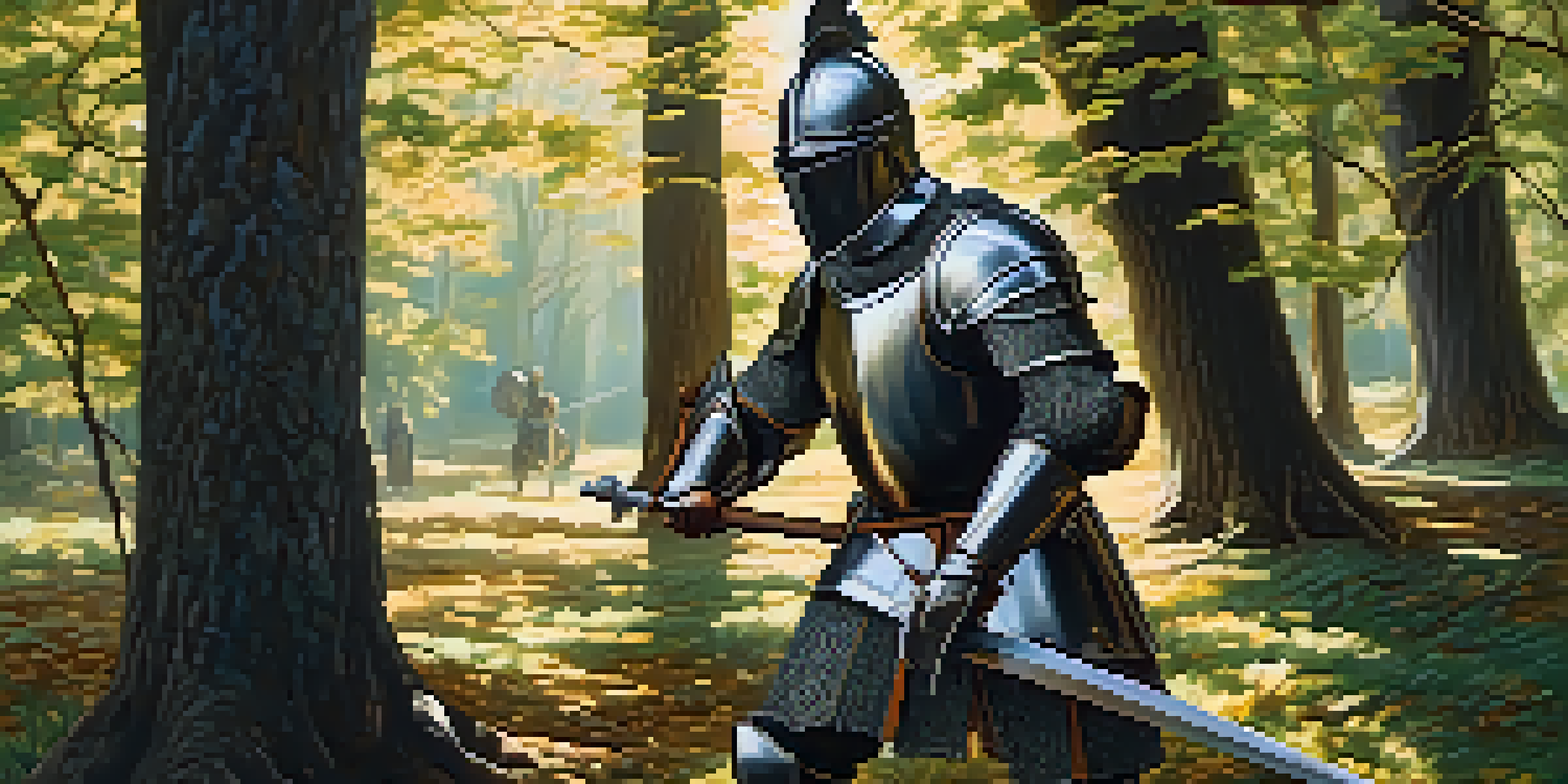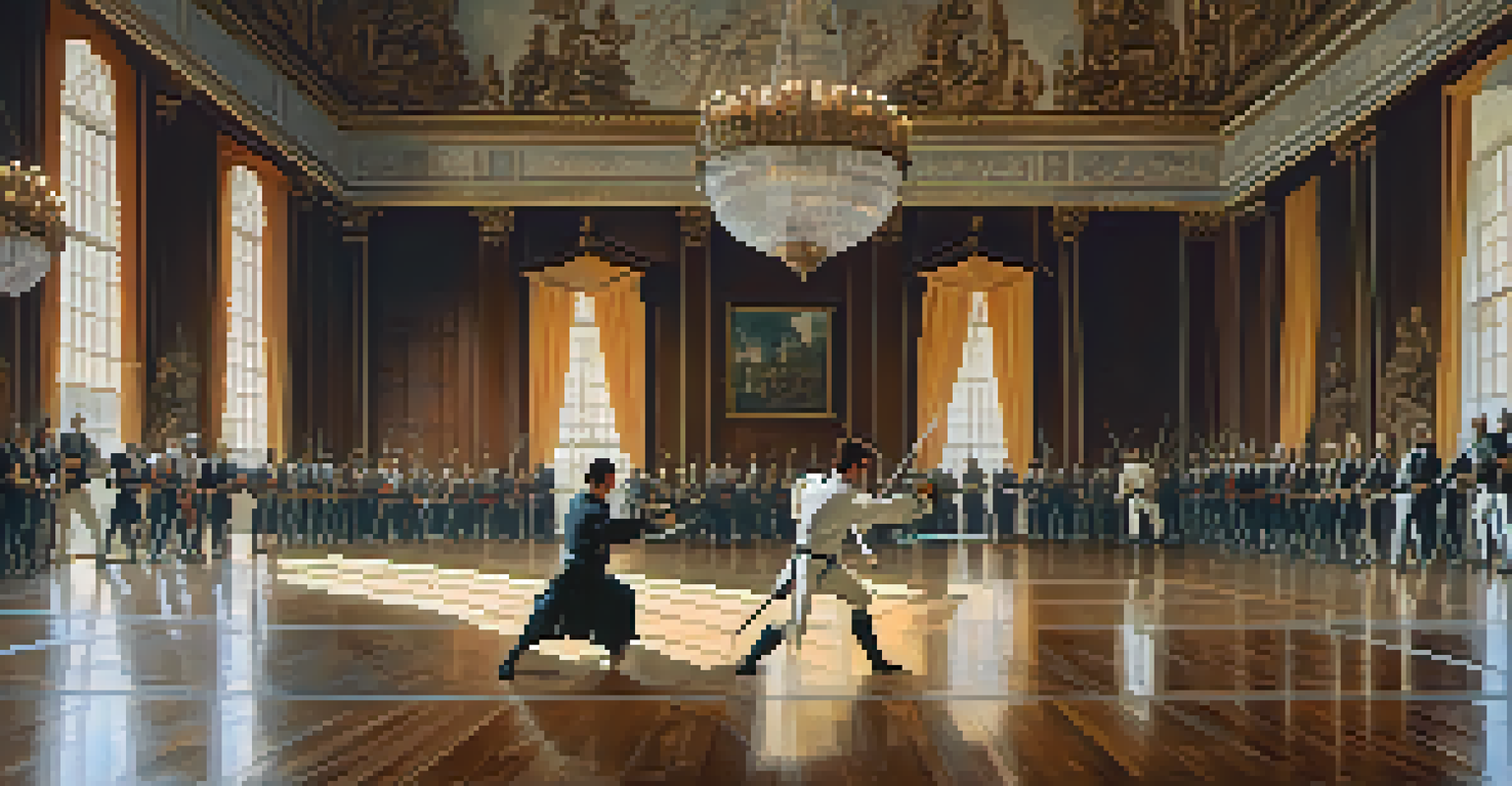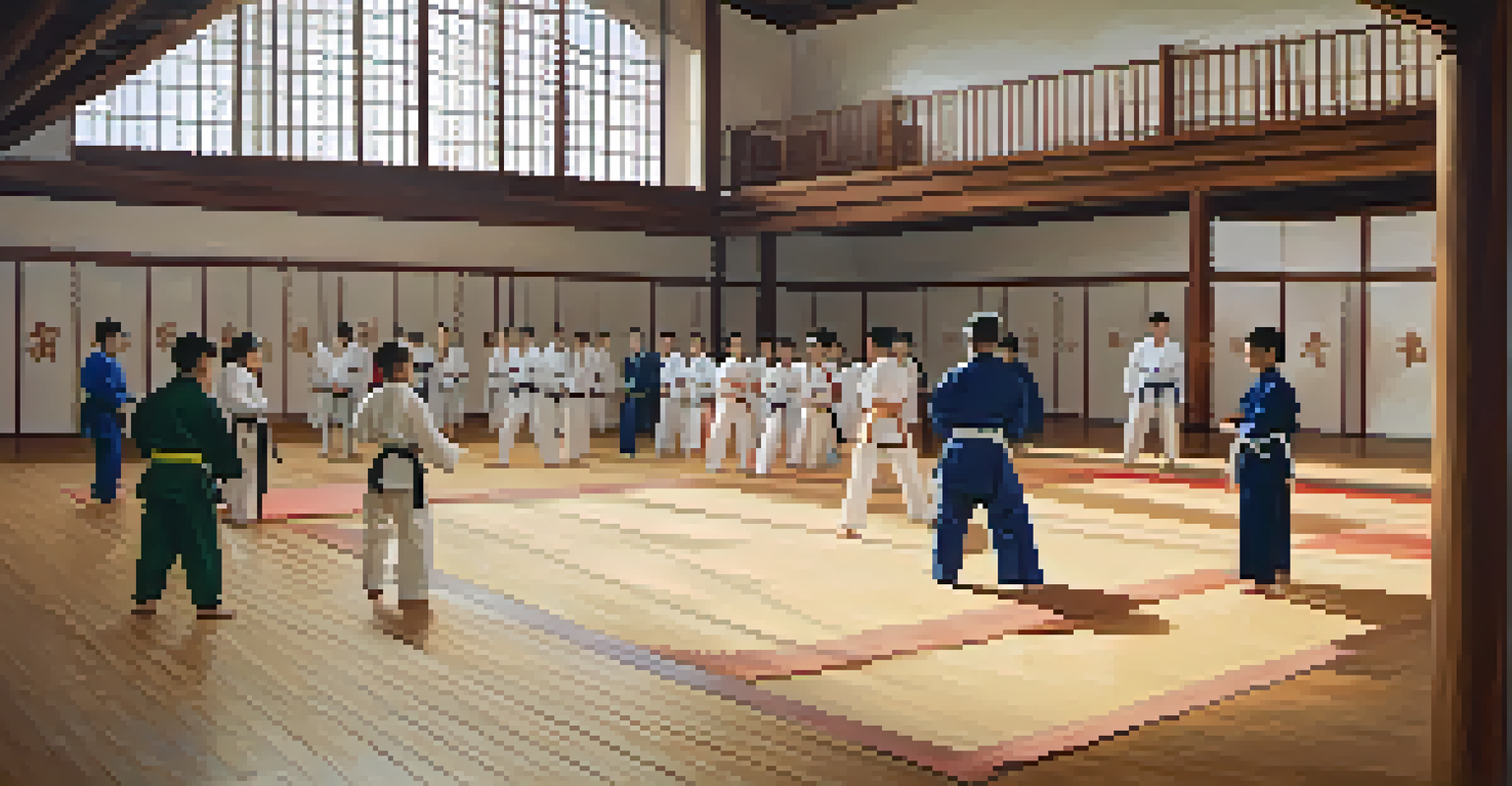Western Martial Arts: From the Middle Ages to Today

The Origins of Western Martial Arts in the Middle Ages
Western martial arts trace their roots back to the Middle Ages, where knights and warriors honed their skills for battle. During this time, various forms of combat training emerged, focusing on swordsmanship, grappling, and horseback riding. Manuals written by masters, like Johannes Liechtenauer, documented techniques and principles, serving as crucial resources for aspiring fighters.
Martial arts is not just about the fight; it's about the journey, the discipline, and the respect you cultivate along the way.
These medieval combat arts were not just about physical prowess; they also emphasized strategy and discipline. Just as a chess player anticipates their opponent's moves, a knight needed to be aware of an enemy's tactics. This intellectual aspect made martial arts an essential part of a warrior's education, blending physical and mental training.
As society evolved and warfare changed, so too did the practice of martial arts. The rise of gunpowder and firearms gradually diminished the role of the knight, leading to a shift in focus towards self-defense and dueling, setting the stage for the development of more modern martial arts.
The Renaissance: A Flourishing of Combat Techniques
The Renaissance period sparked a renewed interest in classical knowledge, including martial arts. This era saw the publication of several influential treatises by masters like Fiore dei Liberi and George Silver, who shared their insights on combat techniques. These texts not only preserved ancient methods but also introduced innovations that shaped how martial arts were practiced.

Combat schools began to flourish, attracting students eager to learn the art of fighting. This was a time when swordplay became a refined practice, with various styles emerging based on regional preferences and available weapons. The rapier, for instance, became popular in Italy and Spain, leading to distinct approaches to fencing.
Martial Arts Evolved Through History
Western martial arts have transformed from medieval combat techniques to modern practices that blend tradition with contemporary needs.
As the art of combat evolved, so did the philosophy behind it. Practitioners began to see martial arts not merely as a means of fighting, but as a discipline that could foster personal growth, respect, and honor—values that would resonate throughout the centuries.
Decline and Revival: The Impact of Industrialization
The Industrial Revolution brought significant changes to society, including the way people viewed martial arts. With the rise of firearms and the decline of traditional warfare, many combat styles faced a decline in practice. This period saw martial arts becoming less relevant to everyday life, leading to a waning interest among the general population.
The essence of martial arts is not the victory; it’s the journey of self-discovery and personal growth.
However, the late 19th and early 20th centuries marked a turning point as various martial arts began to experience a revival. Enthusiasts sought to preserve these ancient arts, leading to the establishment of historical European martial arts (HEMA) groups dedicated to studying and practicing medieval combat techniques. This resurgence brought new life to forgotten skills and traditions.
The revival was fueled by a growing fascination with history and the romanticism of knights and chivalry. Martial arts were increasingly seen not just as skills for battle, but also as a way to connect with history and heritage, making them appealing to a broader audience.
Modern Western Martial Arts and Their Evolution
Today, Western martial arts encompass a wide range of styles, from historical European martial arts to modern self-defense systems. Practitioners often blend techniques from different traditions, creating a diverse and dynamic approach to training. This evolution reflects the adaptability of martial arts to contemporary lifestyles and needs.
Various organizations and schools now offer classes in everything from fencing to medieval sword fighting, catering to enthusiasts of all ages. The community aspect plays a significant role, as practitioners not only learn techniques but also share a passion for history and culture, fostering camaraderie among members.
Community and Competition Thrive
The modern landscape of Western martial arts emphasizes community engagement and competition, fostering skill development and camaraderie among practitioners.
Moreover, the influence of modern media has played a crucial role in popularizing these arts. Movies, television shows, and online platforms have introduced many to the world of Western martial arts, inspiring new generations to explore these ancient skills and connect with their heritage.
The Role of Competition in Western Martial Arts Today
Competition has become an integral part of modern Western martial arts, providing practitioners with opportunities to test their skills against others. Events range from local tournaments to international competitions, showcasing a variety of styles and techniques. This competitive spirit not only sharpens skills but also promotes camaraderie within the community.
Competitions can vary greatly, with some focusing on historical accuracy and others emphasizing practical self-defense. This diversity allows practitioners to choose events that resonate with their personal goals and values, whether they seek to honor tradition or develop modern fighting skills.
In addition to fostering skill development, competitions also raise awareness of Western martial arts. They attract spectators and new participants, creating a cycle of interest that helps sustain and grow these ancient practices in contemporary society.
Cultural Significance of Western Martial Arts Today
Western martial arts have transcended their historical roots to become a significant part of modern culture. They are often associated with values such as discipline, respect, and personal growth, resonating with individuals seeking more than just physical training. Many practitioners find a sense of purpose and community within these arts, contributing to their ongoing appeal.
Moreover, the blending of martial arts with other forms of exercise, like yoga or fitness training, highlights their versatility. This fusion not only attracts more participants but also promotes a holistic approach to health and well-being, making martial arts accessible to a broader audience.
Cultural Significance Today
Western martial arts now embody values such as discipline and personal growth, appealing to individuals seeking holistic health and a sense of community.
As society continues to evolve, Western martial arts will likely adapt, incorporating new techniques and philosophies while honoring their rich history. This dynamic interplay between tradition and modernity ensures that these arts remain relevant and engaging for future generations.
Looking Ahead: The Future of Western Martial Arts
The future of Western martial arts is bright, as more people become interested in exploring these historical practices. With the rise of technology, online resources and virtual training platforms have made it easier than ever for enthusiasts to learn and connect with others across the globe. This digital age opens up new avenues for growth and engagement in the martial arts community.
As interest grows, we can expect to see increased collaboration between different martial arts schools and organizations. This sharing of knowledge and techniques can lead to the development of innovative practices that honor tradition while also embracing modern needs and perspectives.

Ultimately, the future of Western martial arts will depend on the passion and dedication of its practitioners. By preserving the rich history and adapting to contemporary contexts, these arts will continue to thrive, inspiring countless individuals to embark on their own martial arts journeys.